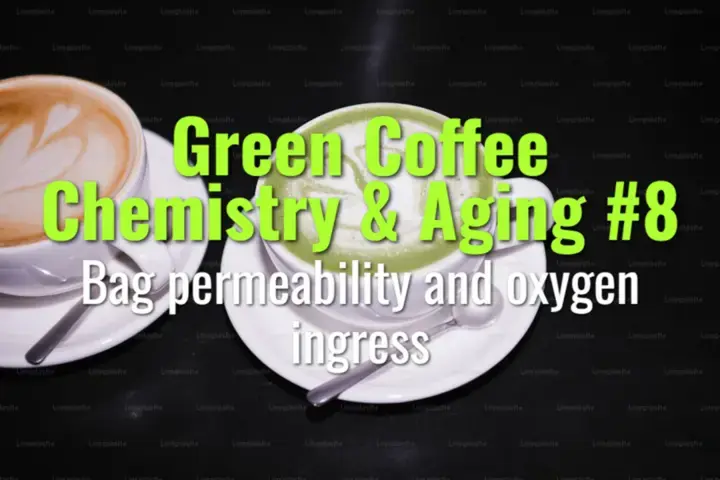Bag permeability and oxygen ingress
This topic explains how the permeability of coffee storage bags affects oxygen exposure, why it accelerates staling, and how different packaging choices influence quality preservation.
- Coffee Basics Nerds
- 2 min read
Article 8 of 12 in Green Coffee Chemistry & Aging/

Why Bag Permeability Matters
- Coffee is hygroscopic and reacts with oxygen.
- Bag material determines how much oxygen and moisture can pass through.
- Oxygen ingress accelerates lipid oxidation, loss of aromatics, and staling.
Common Bag Types
Jute Bags
- Traditional, inexpensive, biodegradable.
- High permeability → oxygen and moisture pass freely.
- Risks: odor absorption, mold in humid environments, flavor fade within months.
Jute + Plastic Liners
- Adds a thin polyethylene liner inside jute.
- Reduces but does not eliminate oxygen/moisture exchange.
- Extends stability by a few additional months.
Hermetic Bags (GrainPro, Ecotact, liners)
- Airtight, multi-layer plastic films.
- Block oxygen, moisture, and pest ingress.
- Maintain stable water activity and freshness for 9–12+ months.
Vacuum & Nitrogen-Flushed Packaging
- Rare for bulk green coffee, more common for samples or small-lot transport.
- Completely removes oxygen → excellent preservation.
- Costly and less practical for large exports.
Effects of Oxygen Ingress
- Lipid oxidation → rancid, cardboard flavors.
- Acid degradation → loss of brightness and complexity.
- Sugar breakdown → reduced sweetness potential in roasting.
- Microbial risk if paired with high humidity.
Best Practices
- Use hermetic liners for specialty or long-term storage.
- Pair with pallets and clean warehouses for extra protection.
- Document packaging method in contracts and QA reports.
- Rotate stock (FIFO) to minimize long storage exposure.
Market Implications
- Specialty buyers increasingly demand hermetic packaging for traceable lots.
- Poor packaging leads to faster quality decline, contract disputes, and financial loss.
Lasting Importance
Bag permeability and oxygen ingress are critical factors in green coffee shelf life. By selecting the right packaging—especially hermetic liners—producers and exporters can protect beans from oxidative staling, ensuring coffees reach buyers fresh, vibrant, and market-ready.
You might also like:
- Tags:
- Lasting Importance
- Green Coffee
- Best Practices
- Shelf Life
- Matters Coffee
- Specialty Buyers
- Water Activity
- Market Implications
- Producers Exporters
- Jute Bags
- Rotate Stock
- Implications Specialty
- High Humidity
- Hermetic Packaging
- Hermetic Bags
- Grainpro Ecotact
- Maintain Stable
- Inside Jute
- Oxygen Moisture
- Bags Grainpro
- Term Storage
- Lipid Oxidation
- Multi Layer
- Plastic Liners
- Hermetic Liners
- Coffee Hygroscopic